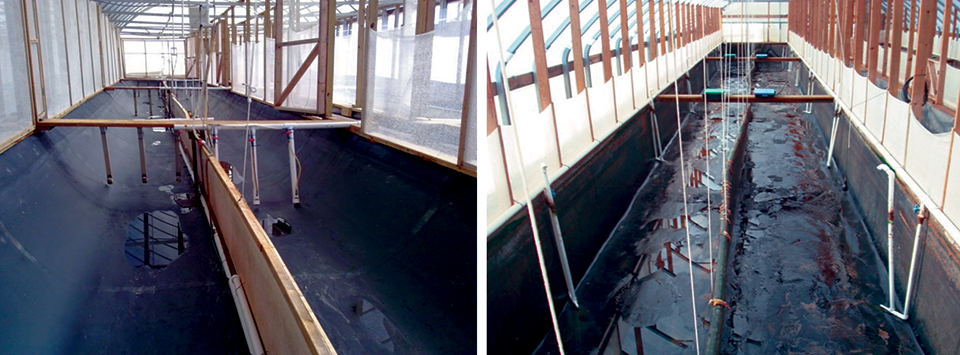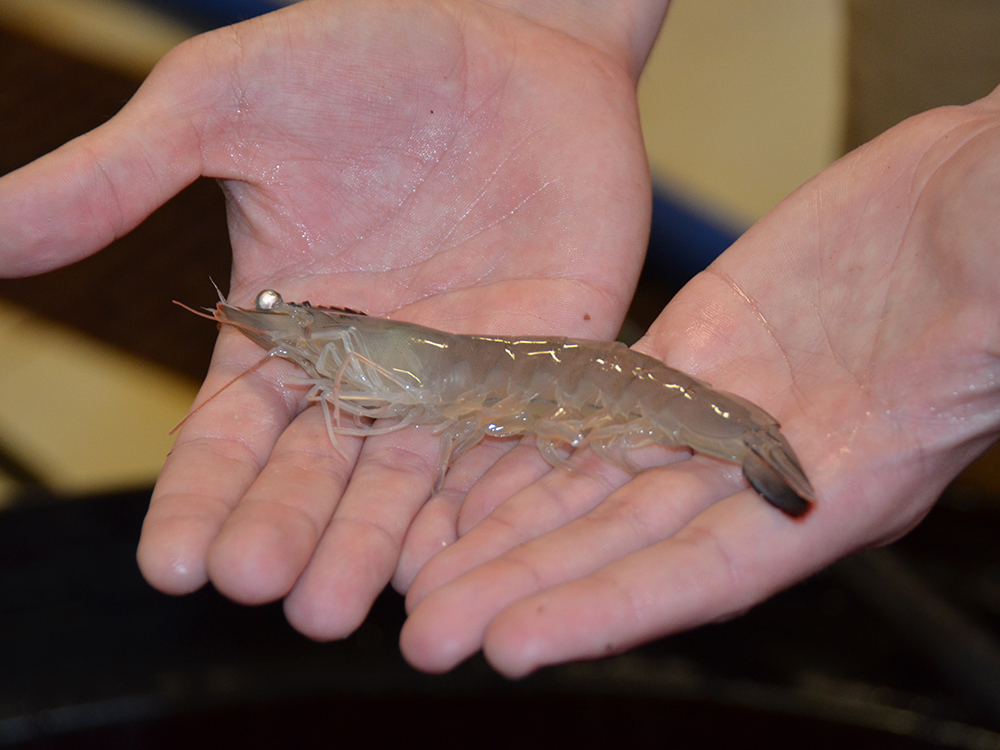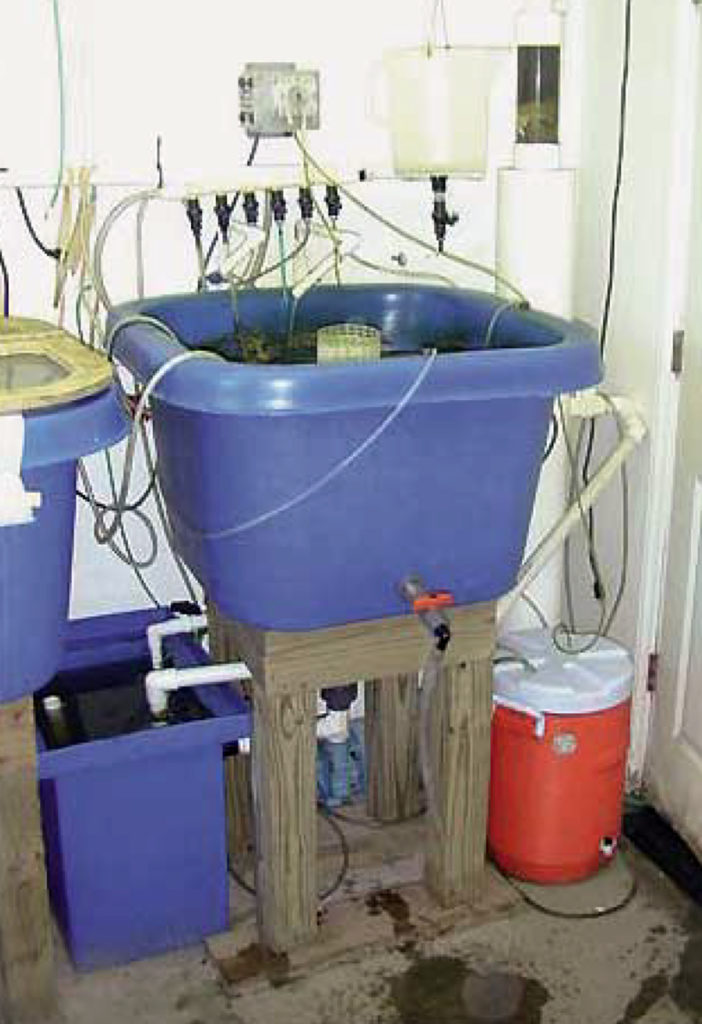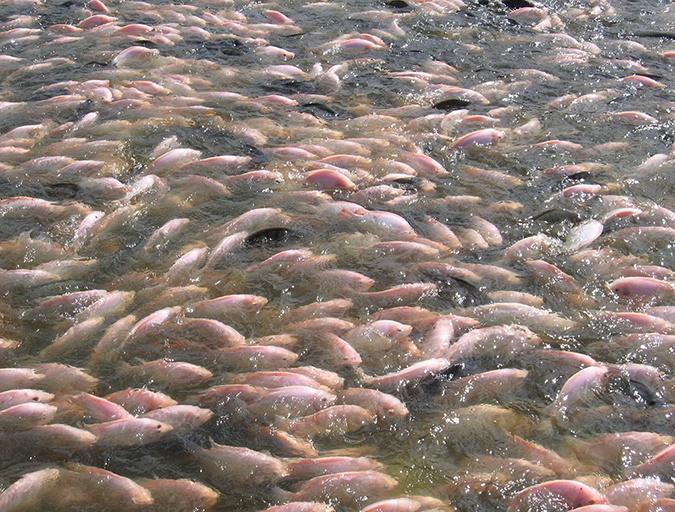Experiment was carried out at the Technological Institute of Sonora in southern Mexico
With steady development of the shrimp-farming industry over the last decade and response to increasing world market demands, the waste loads from culture ponds – mainly uneaten feed and metabolic waste – have generally increased. The nutrient and organic matter effluents discharged from shrimp farms during culture and draining for harvest can have negative environmental impacts.
The authors recently evaluated two feeding practices – using feed trays and a mechanical feed dispersal device – as well as their relationship to total suspended solids (TSS) and organic suspended solids (OSS) loads during pond culture and drainage.
Mexico study
The experiment was carried out over 203 days at the Technological Institute of Sonora in southern Mexico. Six 5-ha ponds with 11 percent water exchange were stocked with Pacific white shrimp, (Litopenaeus vannamei), at 15 postlarvae per m2. The animals in three ponds were fed using 15 feeding trays per hectare, and in the other three ponds, feed was applied mechanically from the pond edges.
Shrimp production
Significant differences in harvest size and live-weight crop were observed (Table 1), with higher values in the ponds with feed trays. Feed conversion and survival rates of about 87 percent were comparable for both sets of ponds.
Casillas-Hernandez, Mean summary data, Table 1
| Variable | Trays | Mechanical Feeding |
|---|
Variable | Trays | Mechanical Feeding |
|---|---|---|
| Harvest size (g) | 32.3 ± 0.9 | 29.5 ± 0.5 |
| Live-weight crop (kg/ha) | 3,325.0 ± 153.2 | 2,920.0 ± 30.0 |
| Feed usage (kg/ha/crop) | 5,928.0 ± 413.4 | 5,182.7 ± 228.4 |
| Fertilizer (l/ha/crop) | 305.8 ± 8.5 | 339.7 ± 4.2 |
| Feed-conversion ratio | 1.78 ± 0.04 | 1.79 ± 0.03 |
OSS, TSS values
Shrimp fed using feed trays generated 1,829 kg OSS per hectare, equivalent to 0.55 kg OSS per kilogram harvested shrimp. Ponds fed by mechanical dispersion unloaded 3,596 kilogram per hectare, or 1.23 kilogram per kilogram shrimp. The higher values may be associated with the organic matter from unconsumed feed.
During culture, the ponds with tray feeding revealed higher TSS loads of 12,623 kilogram per hectare, meaning 3.79 kg TSS per kilogram harvested shrimp. Ponds fed by dispersion registered 6,491 kilogram per hectare, or 2.22 kg TSS per kilogram shrimp. Such differences could be associated with the turbulence caused by the outboard motor on the boat used during the feeding operation. Dispersion feeding was performed mechanically from the pond edges, avoiding ground sediment at the edges of the ponds.
Effluents composition
The ponds in which feed trays were used produced 3,962 kg TSS per hectare and 1,101 kg OSS per hectare during pond drainage, or 1.19 kg TSS and 0.33 kg OSS per kilogram harvested shrimp, respectively. Ponds with shrimp fed by mechanical dispersion produced 5,518 kg TSS per hectare and 1,554 kg OSS per hectare, or 1.88 kg TSS and 0.53 kg OSS per kilogram shrimp, respectively.
Pond bottom composition
Ponds where shrimp were fed by mechanical dispersion produced 48 percent more organic matter on the bottom than those fed via tray feeders (Table 2). This differential accumulation may be related to increases in organic waste (unconsumed formulated feed, fecal matter, etc.) that form ammonia and other undesirable compounds after degradation.
Casillas-Hernandez, Mean organic matter in pond bottoms, Table 2
| Trays | Mechanical Feeding |
|---|
Trays | Mechanical Feeding | |
|---|---|---|
| Initial sampling | ||
| Organic matter (%) | 0.68 ± 0.11 | 0.67 ± 0.05 |
| pH | 7.32 ± 0.27 | 7.34 ± 0.28 |
| Final sampling | ||
| Organic matter (%) | 1.19 ± 0.19 | 1.67 ± 0.22 |
| pH | 6.82 ± 0.21 | 6.30 ± 0.19 |
The lowest pH values registered at the end of the culture period for ponds with mechanical feed dispersion could be related to the highest organic matter registered.
(Editor’s Note: This article was originally published in the October 2005 print edition of the Global Aquaculture Advocate.)
Now that you've reached the end of the article ...
… please consider supporting GSA’s mission to advance responsible seafood practices through education, advocacy and third-party assurances. The Advocate aims to document the evolution of responsible seafood practices and share the expansive knowledge of our vast network of contributors.
By becoming a Global Seafood Alliance member, you’re ensuring that all of the pre-competitive work we do through member benefits, resources and events can continue. Individual membership costs just $50 a year.
Not a GSA member? Join us.
Authors
-
-
H. Nolasco-Soria
Centro de Investigaciones Biológicas del Noroeste
La Paz, BCS, Mexico -
F. Páez-Osuna
Instituto de Ciencias del Mary Limnología
Mazatlán, Sinaloa, Mexico
Related Posts

Responsibility
Advances in super-intensive, zero-exchange shrimp raceways
Research at the Texas AgriLife Research Mariculture Laboratory is investigating ways to improve the economic viability of super-intensive raceways for shrimp production.

Aquafeeds
Biofloc and clear-water RAS systems: a comparison
This study compared two types of indoor, shrimp culture systems: clear-water RAS and biofloc systems. Clearwater RAS had the edge in water quality, but shrimp in the biofloc treatment had a higher feed conversion ratio.

Aquafeeds
Pilot-scale recirculating rotifer culture system uses condensed microalgae
Intensive rotifer culture systems can significantly reduce the space and labor requirements for the production of rotifers in marine finfish hatcheries.

Health & Welfare
Common salt a useful tool in aquaculture, part 1
The preventive use of common salt (sodium chloride) by commercial producers of freshwater fishes has many benefits, including helping with the routine prevention of losses due to diseases, stress and mishandling during transport, harvesting, grading, counting, weighing and induced spawning.


